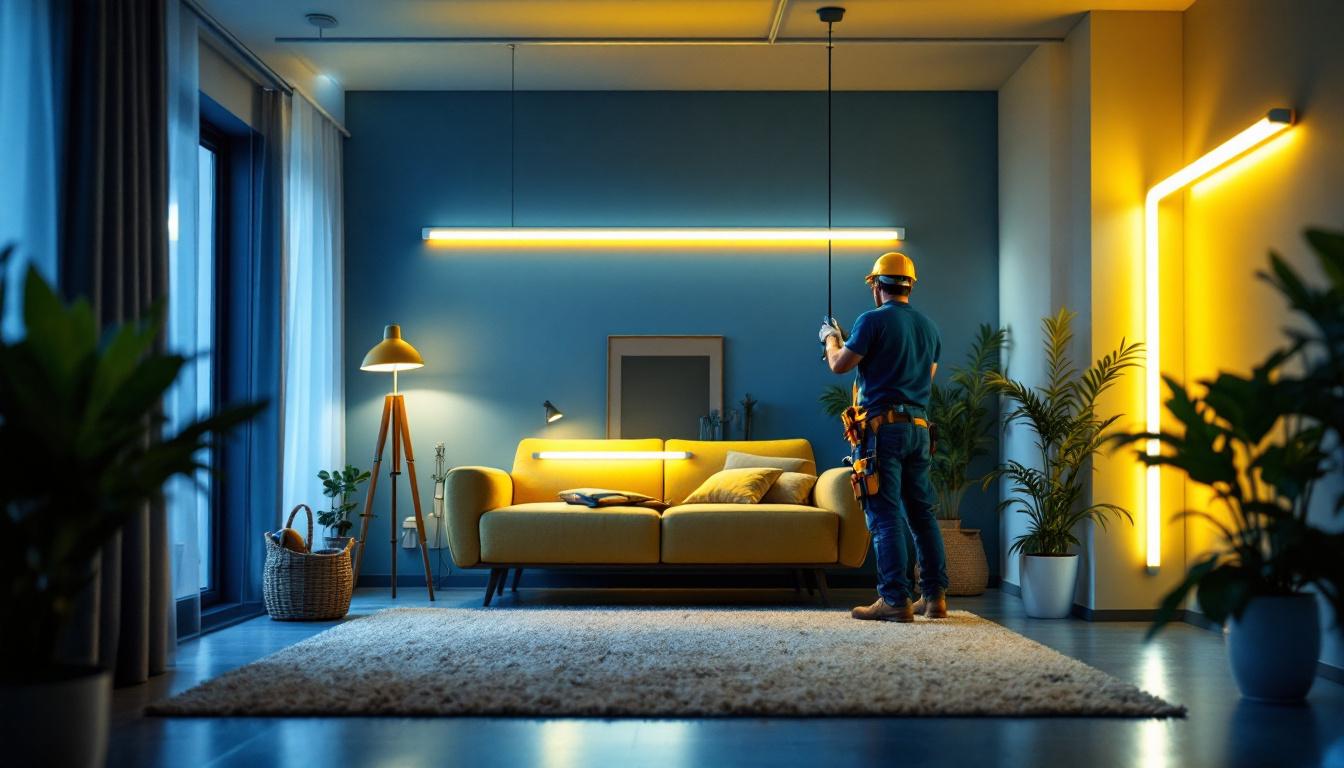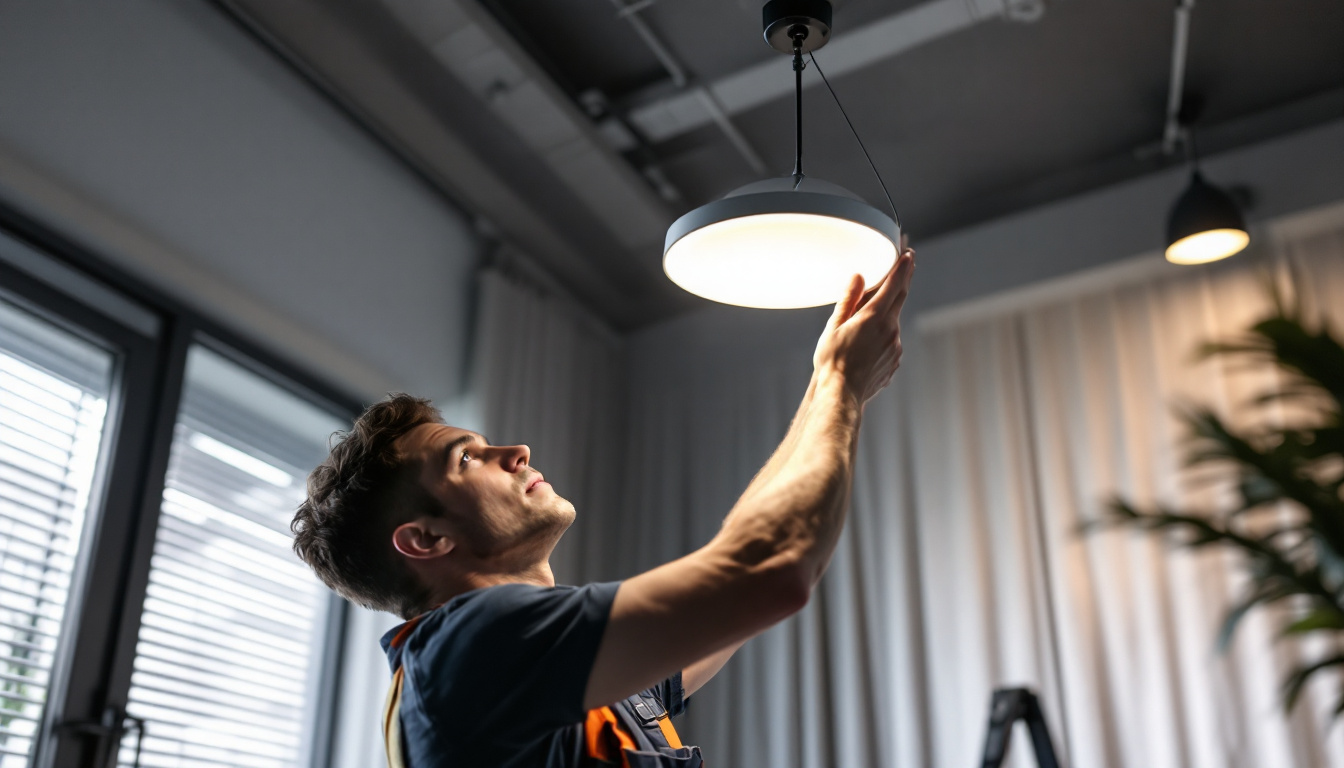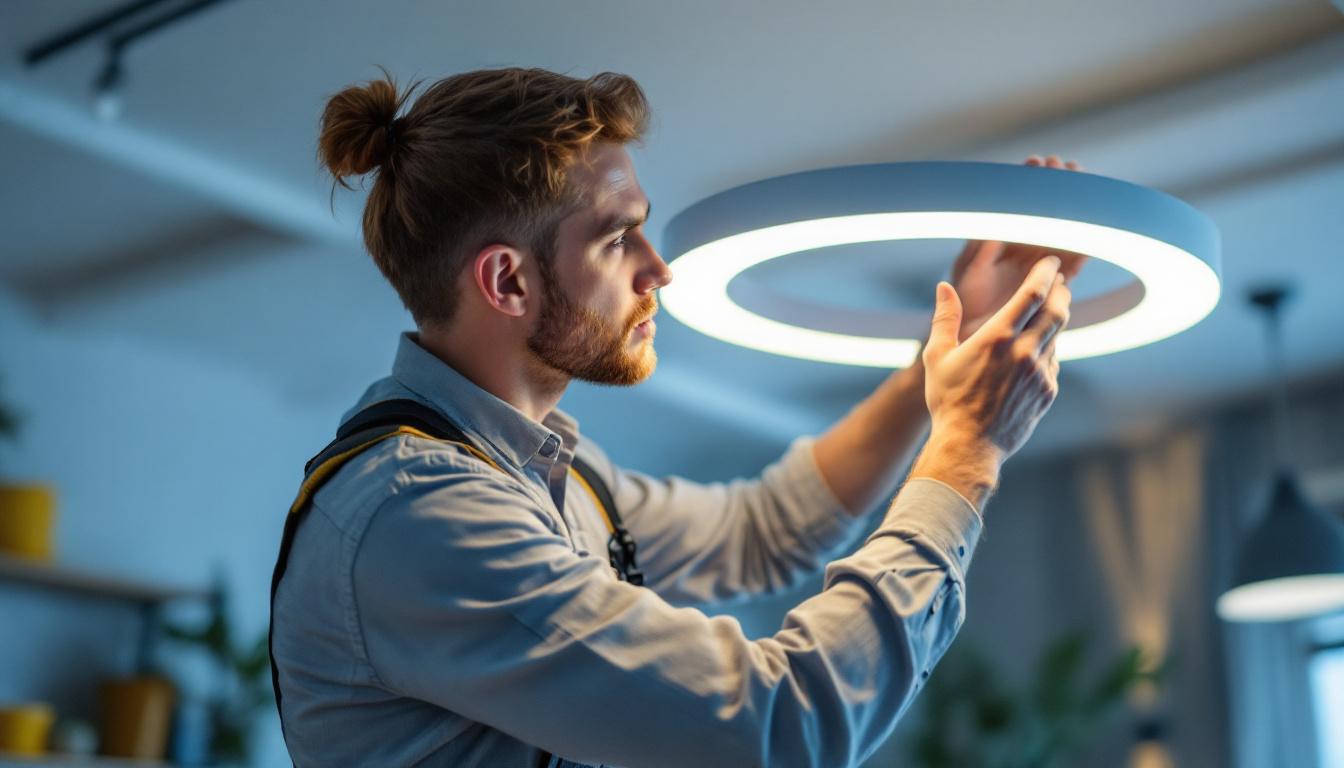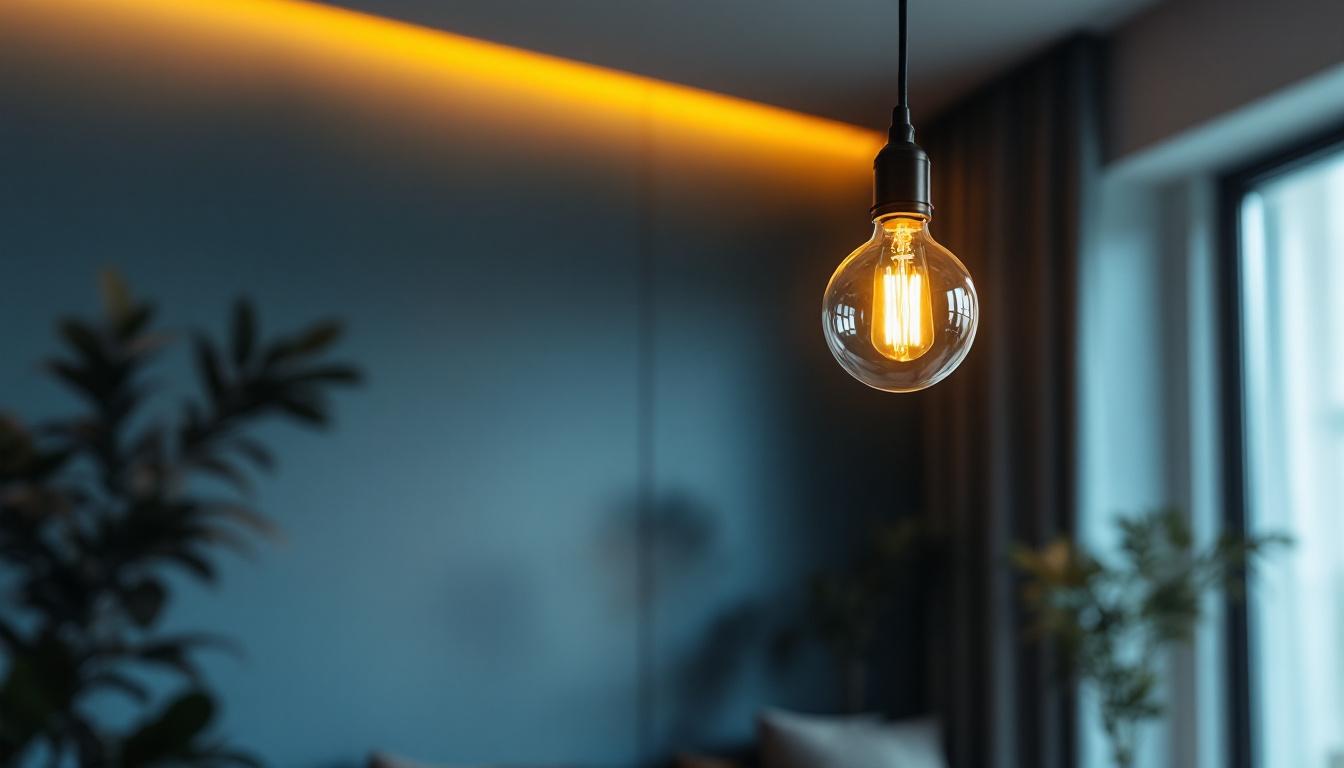
Outdoor lighting is a crucial aspect of residential design that not only enhances the aesthetic appeal of a property but also provides safety and security. For lighting contractors, understanding the nuances of outdoor lighting is essential to meet client expectations and ensure successful installations. This article delves into the essential facts about outdoor lighting that every lighting contractor should know.
Outdoor lighting serves multiple purposes that go beyond mere illumination. It plays a significant role in enhancing the beauty of landscaping, providing safety for pathways and entrances, and creating an inviting atmosphere for outdoor gatherings.
Moreover, effective outdoor lighting can deter crime by eliminating dark areas where intruders might hide. As a lighting contractor, recognizing these benefits can help in designing systems that cater to both aesthetic and functional needs.
One of the primary reasons homeowners invest in outdoor lighting is to highlight architectural features and landscaping. Well-placed lights can accentuate trees, shrubs, and pathways, creating a visually appealing nighttime landscape. Techniques such as uplighting and downlighting can be used to create dramatic effects, drawing attention to specific areas while maintaining a cohesive look.
Lighting contractors should be adept at recommending fixtures and placements that complement the existing design of a home. This involves understanding the color temperature of lights, the type of fixtures available, and how they interact with various surfaces. For instance, warm white lights can create a cozy atmosphere, while cooler tones might lend a more modern feel. Additionally, integrating smart lighting solutions can allow homeowners to adjust brightness and color remotely, enhancing the outdoor experience and providing flexibility for different occasions.
Outdoor lighting is vital for ensuring the safety of residents and visitors. Properly lit pathways, driveways, and entryways can prevent accidents and make navigating a property easier after dark. Furthermore, strategic lighting can enhance security by illuminating potential hiding spots for intruders.
When designing lighting solutions, contractors must consider the layout of the property and identify areas that require additional illumination. This might include installing motion-sensor lights in darker corners or along pathways to provide a sense of security without excessive energy consumption. Additionally, incorporating solar-powered lights can be an eco-friendly option that reduces electricity costs while still providing necessary illumination. The use of timers and smart technology can further enhance safety by ensuring that lights are activated at optimal times, thus maintaining a well-lit environment even when homeowners are away.
There is a wide array of outdoor lighting fixtures available, each serving different purposes and styles. Understanding these types is essential for lighting contractors to provide tailored solutions to clients.
Pathway lights are designed to illuminate walkways and driveways, enhancing safety and guiding visitors to the entrance of a home. These fixtures come in various styles, including bollard lights, post lights, and solar-powered options. When recommending pathway lights, contractors should consider the height, brightness, and design that best suits the property.
In addition to aesthetics, energy efficiency is a significant factor. Solar-powered pathway lights can be an attractive option for homeowners looking to reduce energy costs while maintaining a beautiful outdoor space. Moreover, many modern solar lights come equipped with motion sensors, providing an added layer of security by illuminating only when someone approaches, thus conserving energy during quiet hours.
Spotlights and floodlights are essential for highlighting specific features of a property, such as trees, sculptures, or architectural elements. Spotlights provide focused beams of light, while floodlights offer broader illumination. Contractors should assess the areas that need highlighting and recommend the appropriate fixture based on the desired effect.
Additionally, the placement of these lights is crucial. Spotlights can create dramatic shadows and textures, while floodlights can wash an area in light, making it feel more open and inviting. It’s also worth noting that adjustable fixtures allow homeowners to change the angle of the light, providing versatility for different occasions or seasonal landscaping changes, ensuring that the outdoor space remains dynamic and visually appealing throughout the year.
Wall and ceiling lights are often used in outdoor living spaces, such as patios and porches. These fixtures can provide ambient lighting for gatherings and enhance the usability of outdoor areas during the evening. When selecting wall and ceiling lights, contractors should consider the weather resistance and durability of the fixtures, ensuring they can withstand outdoor conditions.
Furthermore, dimmable options can be beneficial, allowing homeowners to adjust the brightness based on the occasion, whether a quiet evening or a lively gathering. Additionally, wall-mounted fixtures can serve dual purposes; some designs incorporate built-in shelves or hooks, providing functional space for outdoor decor or tools while also delivering essential lighting. This multifunctionality can be especially appealing for homeowners looking to maximize the utility of their outdoor areas without cluttering them with additional furniture or accessories.
As energy costs continue to rise, homeowners are increasingly concerned about the efficiency of their outdoor lighting systems. Lighting contractors must stay informed about the latest technologies and practices that promote energy savings.
LED lights have revolutionized outdoor lighting with their energy efficiency and long lifespan. Compared to traditional incandescent bulbs, LEDs consume significantly less energy and have a much longer operational life. This not only reduces energy bills but also minimizes the frequency of replacements, making them a cost-effective choice for homeowners.
Contractors should educate clients on the benefits of LED technology, including the variety of color temperatures available, which can create different atmospheres in outdoor spaces.
Smart lighting systems are becoming increasingly popular, allowing homeowners to control their outdoor lights through smartphones or smart home systems. These solutions offer features such as scheduling, dimming, and remote access, providing convenience and energy savings.
Lighting contractors should be knowledgeable about the various smart lighting products available and how to integrate them into existing systems. This can enhance the overall appeal of outdoor lighting installations and meet the growing demand for smart home features.
Designing an effective outdoor lighting plan requires careful consideration of various factors. Lighting contractors must assess the specific needs of each property and create a customized solution that balances aesthetics, functionality, and efficiency.
Before beginning any outdoor lighting project, contractors should conduct a thorough assessment of the property. This includes evaluating the layout, existing landscaping, and architectural features. Understanding the client’s vision and how they intend to use the outdoor space is also crucial.
Taking measurements and noting the location of power sources can help in planning the installation process, ensuring that all aspects are considered before proceeding.
A well-thought-out lighting plan is essential for successful outdoor lighting installations. This plan should outline the types of fixtures to be used, their placement, and the desired effects. Contractors should consider layering light sources to create depth and dimension in the outdoor space.
Incorporating different types of lighting, such as ambient, task, and accent lighting, can enhance the overall design and functionality. A balanced approach ensures that the space is not only beautiful but also practical for everyday use.
Proper installation is critical to the performance and longevity of outdoor lighting systems. Lighting contractors must adhere to best practices to ensure that installations are safe, efficient, and effective.
Before commencing any installation, contractors should familiarize themselves with local codes and regulations regarding outdoor lighting. This includes understanding restrictions on brightness, light pollution, and fixture placement. Compliance with these regulations not only ensures safety but also helps maintain harmonious relationships with neighbors.
Contractors should also be aware of any permits required for installation, particularly for larger projects or those involving electrical work.
Outdoor lighting systems require careful attention to wiring and connections to prevent issues such as short circuits or electrical failures. Contractors should use weatherproof materials and ensure that all connections are secure and protected from moisture.
Additionally, considering the layout of the wiring can help avoid potential hazards. Buried cables should be placed at the appropriate depth to prevent damage from landscaping activities or weather conditions.
regular maintenance is essential to keep outdoor lighting systems functioning optimally. Lighting contractors should advise clients on best practices for maintenance to prolong the life of their installations.
Over time, outdoor lighting fixtures can accumulate dirt, dust, and debris, which can diminish their effectiveness. Contractors should recommend regular cleaning schedules to ensure that fixtures remain bright and functional. This may involve simply wiping down fixtures or using specialized cleaners for more stubborn grime.
Clients should also be informed about the importance of checking for any signs of wear or damage, such as frayed wires or cracked fixtures, which can affect performance and safety.
Seasonal checks are an excellent way to ensure outdoor lighting systems are ready for use throughout the year. Contractors can suggest clients inspect their systems before the onset of winter or summer, addressing any issues that may arise due to weather changes.
This proactive approach can help prevent unexpected failures and ensure that outdoor spaces remain inviting and functional during all seasons.
Outdoor lighting is a vital component of residential design that enhances safety, security, and aesthetics. For lighting contractors, understanding the various aspects of outdoor lighting—from fixture types and energy efficiency to design considerations and maintenance—is essential for delivering exceptional service.
By staying informed about the latest technologies and best practices, contractors can create customized lighting solutions that meet the diverse needs of their clients. Emphasizing the importance of outdoor lighting not only enhances the beauty of a property but also improves the overall quality of life for homeowners.
Ready to elevate your outdoor lighting installations with products that blend quality, affordability, and convenience? Look no further than LumenWholesale. Our spec-grade lighting solutions are designed to meet the highest industry standards, ensuring your projects shine with reliability and performance. Say goodbye to inflated markups and enjoy unbeatable wholesale prices, free shipping, and the ease of bulk buying. Transform your lighting projects and give your clients the exceptional service they deserve. Discover the best value in lighting today at Wholesale Lighting at the Best Value.

Discover how lighting contractors can enhance their business with tube lights for homes.

Discover expert strategies for lighting contractors to tackle common challenges with drop ceiling lamps.

Explore the essential best practices for installing circular lights with insights from top lighting contractors.

Discover the essential best practices lighting contractors use when installing single light pendants.